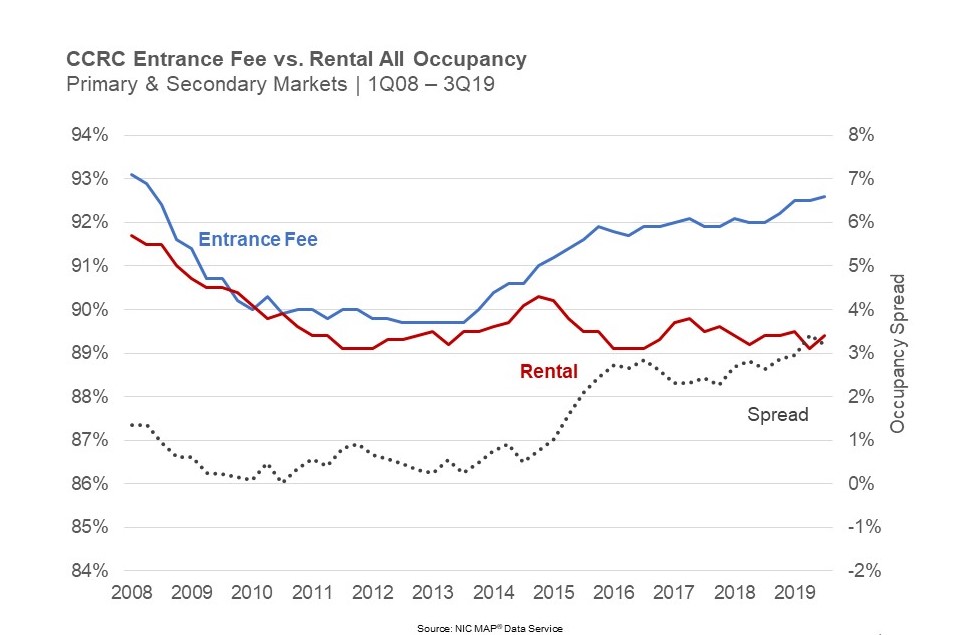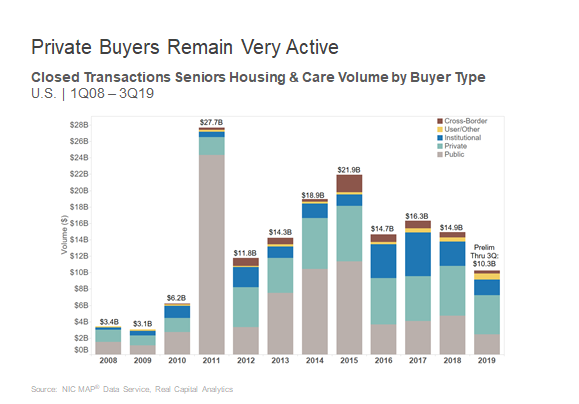As providers grapple with how to best care for frail elders, a new model of collaboration is being launched that could serve as a national template for the integration of housing and healthcare.
Ten senior living and care organizations in the Twin Cities will offer a new Medicare Advantage plan to their residents effective January 1, 2020. It is thought to be the largest roll-out of such a plan to date.
The plan is an institutional special needs plan (I-SNP). These Medicare Advantage plans are designed to meet the often complex needs of adults living in long-term care, assisted living and memory care settings. Enrollment is restricted to eligible individuals who, for 90 days or longer, are expected to need the level of services provided by a long-term care facility.
Medica Advantage Solution PartnerCare is the name of the plan being offered through a unique collaboration between Genevive, a geriatric medical and care management organization, the nonprofit health plan Medica, and the senior living providers. They operate 78 Twin Cities-area long-term care and assisted living communities.
The senior living communities are operated by Benedictine Health System; Cassia (Augustana Care/ELIM Care affiliation); Catholic Eldercare; Episcopal Homes of Minnesota; Goodman Group; North Cities Health Care, Saint Therese; Volunteers of America; Walker Methodist; and Presbyterian Homes & Services (PHS).
“The goal is to provide an integrated care delivery system for the residents we serve,” said Dan Lindh, president of PHS, the largest senior living provider in the PartnerCare plan. “We believe this model of care will improve quality outcomes.”
Enrolled residents will receive a holistic model of care delivered by Genevive through a multidisciplinary team with expertise in providing care to people with complex conditions. The team includes physicians, nurse practitioners, care coordinator, specialists, a pharmacy consultant, anticoagulation team and ancillary service providers, all connected to care teams at the individuals’ long-term care or assisted living facility.
A new model of health insurance and housing
The broader I-SNP program is based on both a clinical and financial model. The clinical focus is on delivering the right care at the right time, and where the resident lives. Early intervention and care coordination are important components, along with strong referral networks to appropriate healthcare providers and the use of electronic medical records so all providers have the most accurate and up-to-date information on the individual. This approach can produce better health outcomes and reduce costs. The I-SNP, which is paid a set amount each month to care for an individual, takes on the financial risk of insuring the resident.
Lindh expects 600 individuals to sign up for PartnerCare in the first year. In two years, he projects an enrollment of 3,000.
Though I-SNPs represent a small part of the Medicare Advantage market, they are growing in popularity. Overall enrollment in I-SNPs grew from 74,000 in 2018 to 87,000 in 2019, according to the Medicare Payment Advisory Commission (MedPAC). The number of plans rose from 97 to 125.
PHS, which serves 27,000 seniors annually, has taken a step-by-step approach into the world of managed care and I-SNPs. Last year, PHS bought a 50% interest in Genevive, a mobile primary care practice which it co-owns with Allina Health.
A believer in treating residents where they live, Lindh said his organization already had doctors and nurse practitioners on staff to treat residents before the I-SNP was formed. The partnership with Genevive expanded the pool of doctors and nurse practitioners available to residents. “You have to scale up,” said Lindh, remarking on the ingredients needed to create a successful I-SNP.
Geography plays a role too. I-SNPs work best in a tight geographic area, said Lindh. The organizations in the PartnerCare program have big footprints in the Twin Cities area. That way medical practitioners can visit and treat patients effectively and efficiently without wasting hours traveling to locations outside of the primary service area.
Lindh does not expect to expand PartnerCare beyond the Twin Cities.
Buy or build expertise?
Though launching an I-SNP such as PartnerCare is a complex undertaking, Lindh noted that it helps to have previous managed care experience.
Last year, PHS introduced a special Medicare Advantage plan (D-SNP) in partnership with Medica. Genevive was already operating D-SNP plans in partnership with Medica, UCare and Blue Cross Blue Shield. These plans are targeted to individuals dually eligible for Medicaid and Medicare at 14 PHS communities. About 3,500 individuals are covered in these D-SNP plans.
The D-SNP has given PHS experience in risk sharing—an important concept in the evolution of managed care where providers receive a fixed amount to provide healthcare for an individual. The D-SNP receives an average of $3,500 a month for the treatment of each individual in the plan.
“It’s working well,” said Lindh. While the margins move up and down, he estimates they will average about 5%-8% annually. Margin, however, is less important than improving overall quality of care.
PartnerCare payments will be about $2,000 per member, per month. That number is based on what the average adult with the same diagnosis would pay on their own in the wider community. Care coordination and management of services creates the dynamics that make risk sharing work, noted Lindh. Also, Reinsurance covers the cost of catastrophic claims.
What’s the best approach for providers new to the world of managed care and I-SNPs? The choice is to slowly build expertise internally, or to purchase the expertise from outside experts. “The magic is in collaboration,” said Lindh.






